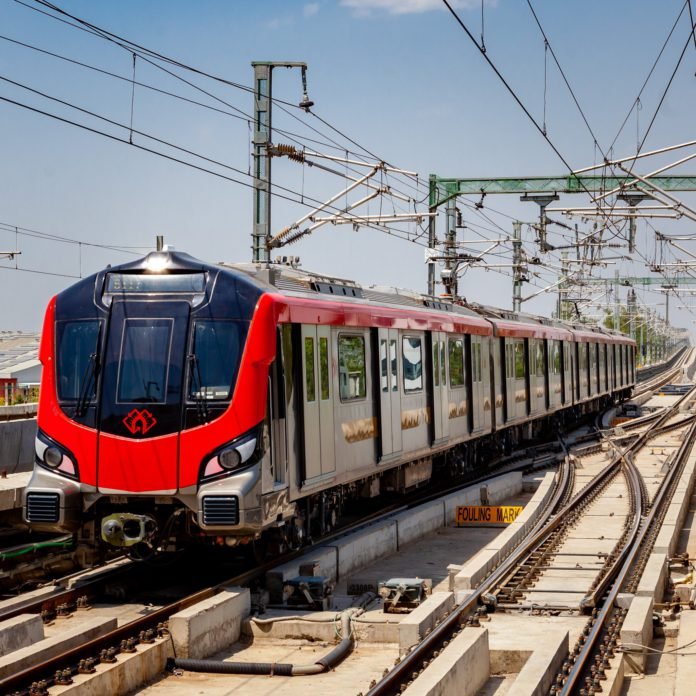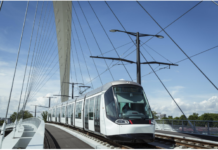Lucknow, the City of Nawabs, enchants with its rich tapestry of history and contemporary charm. Nestled on the banks of the Gomti River, Lucknow boasts magnificent Mughal-era architecture that whispers tales of a bygone era. This vibrant city, the eleventh most populous in India, is a captivating blend of delectable cuisine dating back centuries and a thriving modern metropolis.
Beyond its historical significance, Lucknow serves as the capital of Uttar Pradesh, a state actively promoting tourism through the Uttar Pradesh Heritage Arc. This strategic location also houses a bench of the Allahabad High Court, solidifying its administrative importance.
But Lucknow is much more than just a historical and administrative center. Beneath its elegant facade lies a dynamic city pulsating with life. Traditional industries like Chikan embroidery and aeronautics share space with a flourishing research and development sector. The city’s educational institutions attract students from across India, making it a hub of intellectual growth.
In recent years, Lucknow has witnessed a surge in the service sector, with retail trade and healthcare experiencing significant growth. This economic dynamism, coupled with a rich cultural heritage, creates a unique and inviting atmosphere for residents and visitors alike. Whether you’re a history buff, a foodie, or a business professional, Lucknow has something to offer everyone. And with the arrival of the Lucknow Metro, navigating this captivating city is about to become even easier. So, get ready to embark on a journey through time and experience the magic of Lucknow!
Current Scenario
Lucknow boasts a well-established transportation network, offering a mix of roads, buses, an airport, a fledgling metro system, and railways. National Highways 27 and 30 intersect at the bustling Hazratganj crossing, providing connectivity to major cities like Kanpur, Allahabad, Shahjahanpur, and beyond. The available modes of public transport in the city are taxis, city buses, cycle rickshaws, and auto rickshaws.
The Lucknow City Transport Services Limited (LCTSL) manages the city bus service, with a fleet of 260 buses traversing Lucknow’s roads. For longer journeys, Lucknow boasts an extensive railway network with fourteen stations spread across the city limits. The main Charbagh station serves as the hub for long-distance travel, while other stations offer suburban connectivity.
However, the picture isn’t entirely rosy. Lucknow’s recently launched metro system is currently facing ridership challenges. This raises concerns about its potential revenue generation and long-term sustainability. It’s clear that Lucknow’s urban mobility sector is at a crossroads, with established systems co-existing with a new, evolving metro. The future holds promise for a more integrated and efficient network, but challenges need to be addressed to ensure a smooth and sustainable urban transport landscape.
Challenges & Inception of Lucknow Metro
Lucknow’s a city on the rise. Bustling streets, a booming economy, and a vibrant cultural scene – it’s no wonder the population exploded. But with great growth comes growing pains, and Lucknow’s Transportation system started to feel the squeeze. Let’s dive into the data and see what challenges gave birth to the Lucknow Metro.
- Soaring Population: Between 2001 and today, Lucknow’s population surged from an estimated 2.2 million to over 3 million, with projections reaching 4 million by 2021. The existing transportation system simply couldn’t keep pace.
- Dominance of Private Vehicles: Over 90% of registered vehicles in Lucknow are private vehicles (cars and two-wheelers), putting an immense strain on road capacity.
- Inadequate Public Bus System: At present, the public bus transportation in the city operates with a fleet of 260 buses. The city bus system offered a meagre 6 buses per lakh population, far below the national benchmark of 70-80 buses per lakh for Indian urban areas.
- Impact on Economic Growth: Lucknow’s role as a major administrative, commercial, and educational hub attracts professionals seeking opportunities. A sluggish transport system hinders their ability to navigate the city efficiently, impacting productivity and economic activity.
- Expansion: In 1991, Lucknow Municipal Corporation significantly expanded its jurisdiction, nearly doubling its size from 14,594 hectares to 33,750 hectares. This, coupled with the city’s natural appeal as a center for administration, commerce, and education, fueled a population boom.
The major traffic-generating areas in Lucknow are Railway Station, Charbagh Bus Stand, Vidhan Sabha, Secretariat and the commercial areas in the central part of the city. Also, with the absence of a proper public transport system, many personalized modes have emerged in the city. Lucknow’s impressive growth demanded a modern and efficient public transportation system. The Lucknow Metro serves as a strategic solution, designed to address traffic congestion, unlock economic potential, and connect Lucknow’s growing population with its key business and educational centers.
Let’s board a ride into the beginning of all this!
Proposal of Rapid Transit System: The 1988 Lucknow Transport Plan
Back in 1988, a forward-thinking study by the School of Planning and Architecture in New Delhi laid the groundwork for Lucknow’s future transportation. This comprehensive Lucknow Transport System Plan-2001 analyzed existing traffic patterns and travel habits. It then utilized a land use-transport model to assess various strategies and plans for the city’s growth.
The study’s key recommendation? A medium-capacity Light Rail Transit System (LRT) to address the city’s growing mass transportation needs. This visionary plan proposed two specific corridors: a North-South Corridor (9.6 km) and an East-West Corridor (13.6 km), totaling 23.2 km. Additionally, the study acknowledged the potential for further network expansion to cater to other high-demand areas, paving the way for future feasibility studies.
Interestingly, the plan also identified the limitations of existing intercity railway lines in meeting the city’s internal travel needs over the next decade to fifteen years. This foresight proved crucial in shaping Lucknow’s future transportation landscape. The seeds sown in 1988 eventually blossomed into the Lucknow Metro we know today.
Approval & DPR
The bustling streets of Lucknow, steeped in history and teeming with life, have a brand new way to get around: the Lucknow Metro. This state-of-the-art rapid transit system, operated by the Uttar Pradesh Metro Rail Corporation (UPMRC), promises a smoother, swifter way to navigate the city’s vibrant core. While all this holds immense importance let’s deep dive into the paper trails & development of the same as:
- The Lucknow Metro’s journey began in 2008 with a vision to transform the city’s transportation landscape. The Government of Uttar Pradesh, under Chief Minister Mayawati, proposed the project, and the Delhi Metro Rail Corporation (DMRC) submitted a concept paper outlining its feasibility.
- Following an agreement between DMRC and the Lucknow Development Authority (LDA) in February 2009, the project gained momentum. Years of planning and approvals ensued. In June 2013, the state cabinet, led by Chief Minister Akhilesh Yadav, gave the green light for the metro network and the creation of a dedicated Lucknow Metro Rail Corporation (LMRC) to oversee its development and operation.
- August 2013 marked a crucial milestone with the Government of Uttar Pradesh approving the Detailed Project Report (DPR) prepared by DMRC. This comprehensive document laid the groundwork for the metro’s construction.
- By October 2013, LMRC was formally established as a special-purpose vehicle to spearhead the project. With the construction set to begin in December, the stage was set for Lucknow’s rapid transit dream to become a reality.
Lines of Lucknow Metro
| At a GlanceOperational: 22.878 km | Under Construction: 0 km | Approved: 0 km | Proposed: 85 kmDaily Ridership: 67,000/day (August 2023)Rolling Stock: 80 coaches (20 trains of 4 cars) supplied by Alstom |
Lucknow Metro Phase 1A Route (Operational)
Line-1: CCS Airport – Munshi Pulia
Length: 22.878 km
Type: Elevated (19.438 km with 19 stations) and Underground (4 km with 4 stations)
Depot: Transport Nagar
Number of Stations: 21
Station Names: CCS Airport (underground), Amausi, Transport Nagar, Krishna Nagar, Singar Nagar, Alambagh, Alambagh Bus Station, Mawaiya, Durgapuri, Charbagh Railway Station, Hussain Ganj (underground), Sachivalaya (underground), Hazrat Ganj (underground), K.D. Singh Stadium, Vishwavidyalaya, IT Chauraha, Badshah Nagar, Lekhraj Market, Ramsagar Mishra Nagar, Indira Nagar & Munshi Pulia.

Proposed Routes
- Lucknow Railway Station (Charbagh) – Vasant Kunj
Length: 11.098 km
Elevated: 4.548 km with 5 stations (GB Marg – Thakurganj)
Underground: 6.55 km with 7 stations (Balaganj – Vasant Kunj)
Number of Stations: 12
Station Names: Gautam Buddha Marg, Aminabad, Pandeyganj, City Railway Station, Medical College Chauraha, Nawazganj, Thakurganj, Balaganj, Sarfrazganj, Musabagh, Vasant Kunj
| Latest Update The Uttar Pradesh Government has given the thumbs up to the second phase of Lucknow’s metro project. Spanning 11.165 km from Charbagh to Vasant Kunj, construction on this new corridor is set to begin by June 30, 2027, offering commuters a faster and more convenient way to travel. |
Lucknow Metro Ridership: A City on the Move
Lucknow Metro has become a game-changer for the city’s transportation landscape. Since its inception in 2017, the ridership has steadily climbed, reflecting the growing popularity and convenience it offers to commuters. Let’s delve deeper into the current trends, factors contributing to the rise, and what the future holds for Lucknow Metro.
Riding the Wave: A Look at Recent Ridership Trends
- Record-Breaking Start to 2024: Lucknow Metro broke its previous ridership records in the first quarter of 2024. On January 1st, it witnessed a phenomenal surge, with a staggering 1.30 lakh passengers using the metro in a single day. This surpassed the previous record of 93,237 passengers set in December 2023 (Source: Hindustan Times).
- Steady Growth: While the daily ridership fluctuates based on weekdays, weekends, and holidays, the average daily ridership for 2024 is estimated to be around 87,000 passengers, a significant increase compared to previous years (Source: Times of India). This growth trajectory indicates a growing trust in the metro system as a reliable and efficient mode of transportation.
Fueling the Rise: Factors Contributing to Increased Ridership
Several factors are propelling Lucknow Metro towards becoming the city’s preferred mode of transport:
- Increased Awareness: As Lucknow Metro becomes more ingrained in the city’s daily life, public awareness about its benefits like speed, affordability, and comfort has significantly increased. This awareness is attracting new riders, particularly those who previously relied on congested and unreliable road traffic.
- Fueling the Change: Rising fuel prices are making car travel a less attractive option, pushing residents towards more economical alternatives. Lucknow Metro offers a cost-effective and time-saving solution, especially for longer commutes within the city.
- Connecting the Dots: The current 22.8 km North-South corridor, connecting Chaudhary Charan Singh International Airport to Munshi Pulia, provides a crucial link for a large segment of the population. The upcoming East-West Corridor (Vasant Kunj to Charbagh) promises to further expand the network, reaching new areas and attracting a wider ridership base.
East-West Corridor – Charbagh to Vasant Kunj
The upcoming East-West Corridor (Charbagh to Vasant Kunj) of the Lucknow Metro is a significant development that promises to revolutionise public transportation in the city. Here’s a breakdown of how this expansion is poised to significantly increase ridership for Lucknow Metro:
Unlocking New Ridership Base:
- Targeting Densely Populated Areas: The East-West corridor traverses through densely populated areas of Lucknow, including the historic Old City. This region has traditionally relied on autos, rickshaws, and other less efficient modes of transport. The metro’s arrival will offer a faster, more convenient, and reliable alternative, attracting a vast new ridership base.
- Catering to Commuters and Businesses: The corridor connects crucial areas like the Lucknow Junction railway station (Charbagh) to commercial hubs and residential neighborhoods in the west. This improved connectivity will cater to daily commuters, students, and working professionals, significantly boosting ridership during peak hours.
Enhancing Network Connectivity:
- Bridging the Gap: Currently, the Lucknow Metro primarily serves the north-south axis. The East-West corridor will bridge this gap, creating a more interconnected network. This will encourage multi-modal journeys, allowing passengers to seamlessly transfer between north-south and east-west lines, opening up new travel options for a wider range of destinations.
- First and Last Mile Connectivity: The expansion necessitates the development of a robust feeder system with buses and other public transport options connecting metro stations to far-flung neighborhoods. This will eliminate first and last-mile connectivity issues, making the metro a more attractive option for a larger segment of the population.
The East-West Corridor is not just an infrastructure project; it’s a potential game-changer for Lucknow’s urban landscape. By unlocking new ridership potential, promoting economic activity, and fostering TOD, the expansion promises to transform the city’s mobility ecosystem.
By closely monitoring ridership patterns after the launch, authorities can further optimize services, adjust infrastructure based on demand, and ensure the Lucknow Metro remains a sustainable and efficient public transportation solution for the city’s growing population.





